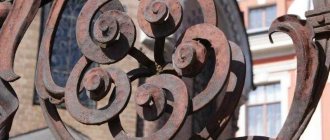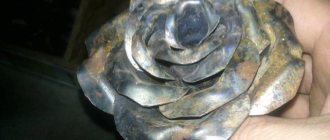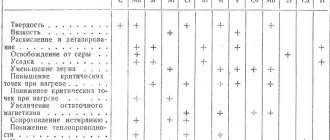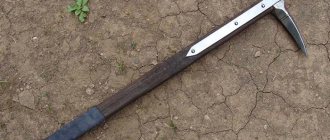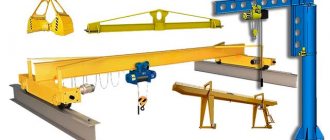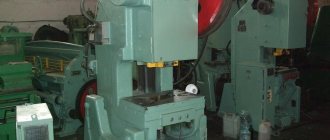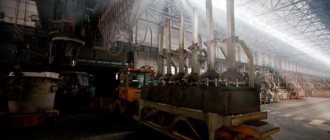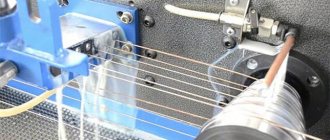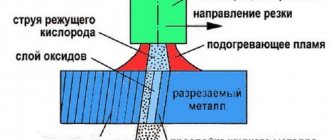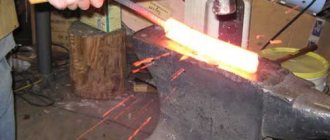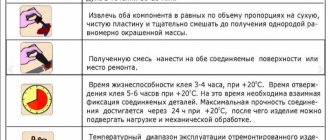Production of forged products: raw materials and equipment
In the minds of most people, a master blacksmith is a good fellow of heroic stature with a two-pound hammer, working in the middle of the fiery hell of a forge. In fact, the equipment of a modern forge allows one to minimize physical costs in the manufacture of forged products. So, below are approximate lists of raw materials and equipment for organizing the work of a forge shop. Initially, you will have to purchase a large number of “consumables”, such as:
- A variety of metal profiles in the form of angles, pipes and squares, as well as sheet iron.
- Steel blanks of various sizes and configurations.
- Primers, paints, cooling oils and other technical fluids.
The most indispensable tool in the process of forging metal products is the bent. It is used to bend workpieces at any angle and facilitates the completion of a large number of forging operations in a short time. In addition to bending, for cold forging you will also need to purchase:
- A special tool for creating a wavy metal structure.
- Workbench table with vices of different sizes.
- Powerful welding inverter.
- A device for spiral twisting of metal blanks - a snail.
- A mechanism for twisting metal rods around its axis is a twister.
- A high-quality and powerful grinder.
Hot casting of metal products will require the purchase of the following types of equipment:
- Forge with gas or coal heating.
- Sets of hammers, anvils and pliers of various sizes.
- High-quality compressor, as well as dies and molds.
- Hydraulic Press.
- Mechanism for circular bending of products.
- Lathe, milling and drilling machines.
Evolution of equipment development
Types of stamping presses and special equipment for forging
Sheet-rolling hammer of the Neivo-Shaitansky plant (second half of the 19th century).
Until the 15th and 16th centuries, almost all metal products were produced by private workshops and small workshops. However, the beginning of the Great Geographical Discoveries with the accompanying increase in the tonnage of sea vessels required the production of fairly large anchors and other ship equipment. It was no longer possible to forge such large parts by hand with a hammer. As a result, the first mechanical hammers powered by water power appeared.
Further, the impetus was the development of weapons and vehicles, and in the 19th century entire metalworking giants with steam equipment emerged.
The invention of hydraulic presses made it possible to introduce stamping as the main technology for mass production of products. And the further emergence of electric motors gave impetus to the development of crank presses, which form the modern basis of forging and stamping equipment.
Investments and income
Forge shop: description, equipment.
cold forging Financial investments in opening a business for the production of forged products will amount to about 3 million rubles. The main expense items are as follows:
- Payment of rent for the blacksmith shop premises.
- Purchase of equipment and raw materials.
- Salaries for shop workers.
- Fare.
- Business advertising.
- Unforeseen expenses.
Naturally, the lion's share of the funds will go to the purchase of equipment - all other expenses will amount to no more than 10% of the total amount.
As for the profit from the manufacture of forged products, it directly depends on the complexity and exclusivity of incoming orders. It may also turn out like this: the income from completing ten orders in August will be lower than the income from completing two orders in September. It’s just that in August you were ordered to make ordinary household consumer goods (pokers, nails, iron wedges), and in September – an exclusive forged gate and a gift dagger.
To summarize the above, I would like to note that you will begin to receive tangible profits only after you have gained a decent base of regular customers. The average payback period for this business idea will be from six to twelve months.
Characteristics of the site
DIY cold forging
A modern forge shop is a combination of several sections. This includes production and auxiliary departments, warehouses, as well as service and household areas.
If we talk about each individually, then production departments are areas where they prepare parts, as well as rooms where forging hammers and presses, stamping hammers and other main equipment for work are located. Auxiliary areas include workshops that repair main equipment. This also includes power plants, heating plants, laboratories, technical control of finished parts, etc.
The warehouses of the forge shop usually store metal, blanks, forgings, burrs, spare parts, etc.
Typical design assignment
The issues specified in the tasks are reflected in the design assignment (drawn up by the customer with the involvement of the design organization, if necessary), which is the basis for the development of the project. As a rule, the design specifications indicate the following:
- name of the enterprise, building or structure;
- basis for design;
- area, point or site for construction;
- product range and production capacity for its main types (in physical or value terms) for full development and in the first place;
- operating mode of the enterprise, its specialization, production and economic cooperation;
- the main sources of supplying the enterprise during its operation and during the construction period with raw materials, water, heat, gas, electricity;
- conditions for wastewater treatment and discharge;
- basic technological processes and equipment;
- the need to develop automated production management systems;
- planned expansion of an enterprise, building or structure;
- the planned construction time frame, the procedure for its implementation and commissioning of capacities in turn;
- cooperation in the construction of an enterprise located as part of an industrial hub;
- the planned amount of capital investment and the main technical and economic indicators of the enterprise or structure that must be achieved during the design;
- data for the design of housing and cultural construction projects;
- requirements for the development of technical design options or parts thereof;
- staged design;
- name of the general designer;
- name of the general contractor.
This composition is specified in relation to the characteristics of the industry and the conditions of construction.
Benefits of a blacksmith business
Milling machine 676: brief description, technical characteristics. metal cutters for milling machine
Forged products and accessories are quite in demand today in our country. The use of such products in the design of the facade of a building, in landscape design or in the overall interior creates a feeling of a magical and original atmosphere.
Artistic forging looks equally harmonious in the decor of a country house or plot, and in the design of office buildings. You can use elements of artistic forging in the manufacture of furniture, on fences, and canopies over the entrance. In general, anywhere. Such products are very expensive. Therefore, with a competent approach to organizing a blacksmith business, you can receive a stable and high income.
Let's sum it up
Artistic forging and production of blacksmith products is a promising and profitable business. If highly qualified professionals work in your forge, and the quality of your products is at a high level, then all the funds invested in organizing the business will pay off quite quickly. If you plan to combine artistic forging with stained glass making, then you can be guaranteed success and a stable income.
Therefore, running a blacksmith business is not so difficult and quite profitable. In addition, all efforts and expenses will be justified. It is only important to carefully think through even the smallest details and thoroughly approach the organization of the business: take into account all the requirements for the premises, purchase high-quality tools and find professional and experienced blacksmiths for the work. This approach will provide you with demand for your products and stable profits.
Source
Professional and qualified welding services are popular and in demand in any city and region of the country, regardless of the size of the locality. Subject to a competent approach to the development and implementation of a business project, a welding shop can become a source of stable and high income for its owner. The business plan for a welding shop contains step-by-step guidance on organizational activities, recommendations regarding the process of state registration of business activities, selection of qualified personnel, advertising and marketing techniques, as well as financial analytics of the income and expenditure parts of the enterprise budget.
Products obtained from forging elements
Having understood the variety of objects created using artistic forging, it is worth mentioning the finished goods obtained using this craft. Non-standard forged products, with graceful curves, created taking into account the image of the room, be it an apartment or a country house, will miraculously fit into a modern design solution and into a traditional interior, adding an ancient gloss designed to create a feeling of completeness. In skillful hands the following can be created:
- gates,
- fences,
- stairs,
- window bars,
- balcony railings,
- lanterns,
- lamps,
- furniture.
Organizing this business from scratch
Before organizing a forge, it is necessary to go through the process of transformation from an ordinary person into an individual entrepreneur. This miracle happens in the Federal Tax Service department of your city after paying a state duty of 800 “wooden” to the royal treasury and writing the corresponding petition (statement). After completing these steps, you will be presented with a special “letter” - a OGRN certificate, which will officially confirm your new status.
Next, you should worry about finding a suitable room for a forge. Its area must be at least 100 square meters. meters, so that it could comfortably accommodate two departments - a hot casting workshop and a cold forging workshop. In time immemorial, master blacksmiths made their best things exclusively using the hot casting method. In modern times, to simplify the production process, cold forging is more often used.
The forge should be located as far as possible from the residential areas of the city, since the noise from its work sometimes exceeds 100 decibels. It is desirable that there be a spacious courtyard on its territory for storing finished products and materials
When arranging a room, you need to pay special attention to the ventilation system, because without good ventilation it will be physically impossible to work there. It is also necessary to settle all issues with the fire service - this body always closely monitors the activities of potentially fire-hazardous industries
An equally responsible approach is needed when recruiting workers for the forge. The optimal number is four people. One foreman in each of the workshops, as well as three general workers to help them. It will be useful to purchase transport for the delivery of large-sized products.
At the initial stage of the forge shop, emphasis should be placed on the production of the following types of the most popular products:
- Fences and fences.
- Furniture for the garden and vegetable garden.
- Artistic gates and bars on windows.
- Forged parts of garden gazebos.
- Accessories for fireplaces.
- Carved candlesticks and lamps.
The production of the above products will allow your business to reach high profitability rates as quickly as possible.
Types of blacksmithing
Forging technology includes several types of operations that differ in the tool used, execution modes and purpose. These operations are fully used in the technique of artistic forging, and the manufacture of any product can include any set and sequence of them. The main feature for classification is the processing temperature - hot and cold forging. Other criteria can also classify the operation into different types and subtypes.
Hot artistic forging
During hot forging, the product is subjected to preliminary and, if necessary, accompanying heating to increase softness and ductility. There are two types of hot forging of metal:
- Free or hand forging, in which the workpiece is freely placed on an anvil, and the required shape and size are achieved by blows of a hand or mechanical hammer. This type also includes forge welding - the connection of parts heated to the melting temperature using a forging tool.
- Stamping, in which the workpiece is placed in a die with an internal cavity, the shape and size corresponding to the finished product. During the forging process, the workpiece is deformed and fills the empty die area.
Cold artistic forging
In cold forging, the product is processed without preheating. It takes a lot of force to deform cold metal, so this method is used for processing small-section workpieces. For cold artistic forging, a variety of machines are used, including cold stamping.
What is cold forging
This technology is also used in blacksmithing. The main difference from the conventional process is that there is no preliminary stage in which the workpiece is heated to the desired temperature. In this case, only local heating of those areas where the bend needs to be made is allowed. This method is based on the plasticity of the metal.
Any metal has parameters such as bending, tensile and tearing strength. Using these features, it is possible to process metal without preheating it. It is worth mentioning here that due to the absence of exposure to high temperatures on the workpiece, the chemical composition of the steel does not change, and therefore tempering, annealing and hardening may not be carried out.
Pros and cons of using this method
The obvious advantages include the following:
- firstly, there is no need for preheating, which significantly reduces the cost of products, since there is no need to purchase and use heating devices;
- secondly, the products are characterized by greater strength;
- thirdly, it is possible to fit the part to the template with high accuracy;
- the need for additional finishing of the finished part is completely eliminated or minimized;
- the finished product does not have soot residues or other combustion products on the surface.
However, cold forging is not without its disadvantages:
- it is necessary to put in much more effort to achieve results than with hot pressing;
- it is impossible to work with durable metal, which is presented in the form of sheets or blanks;
- in some processing options, a huge amount of force will be required, which requires special equipment;
- Before work, you need to thoroughly clean the surface.
As a result, we can say the following. Firstly, the equipment for a forge is hammers, presses and stampings. In addition, depending on the operation being performed, various additional devices may be used. Secondly, the forge shop today is an integral part of a larger-scale production, and not a separate structure.
How is forging done using this method?
To carry out cold forging, three types of operations are usually used:
- pressing the workpiece using manual or mechanized equipment;
- embossing is one of several processes that relate to forging without preheating, but most often it is possible to apply an ornament only to copper, since the metal is quite soft and pliable;
- The third processing option is bending, which is one of the main ones.
Induction heaters
Before processing by hot forging, the workpieces are heated to a certain temperature. To solve this problem, various heating equipment is used. This list also includes induction heaters. They preheat the workpiece before stamping, bending, forging, etc.
In particular:
the use of induction heaters leads to a reduction in energy costs and this is quite important, especially in conditions of stable growth of tariffs; the use of heaters increases labor productivity, since induction heating allows minimizing the time spent warming up the part; in automated furnaces, due to the accuracy of positioning and arrangement of workpieces in the inductor, heating accuracy increases; heating the workpiece in an induction furnace is characterized by a small amount of scale and this has a positive effect on the service life of the stamping tool;
Installing such equipment allows you to free up additional space in the production facility.
HDTV induction heater
Relevance of the welding business, its advantages and disadvantages
The demand for the welding business and the services of professional welders is currently beyond doubt, and this type of business activity is one of the most relevant and stable today. An additional advantage will be the personal professional interest of the aspiring entrepreneur in his own business, the presence of the necessary skills and abilities, since a business based on one’s own hobbies, as we know, is literally doomed to success.
Among other things, the welding business is valued by entrepreneurs due to the absence of the need for large start-up investments and the purchase of a wide range of expensive equipment. Also, the process of state registration of a business in this area is not complicated and does not require additional licenses, so even a novice entrepreneur without experience in implementing other business projects can start his own enterprise in the field of welding business.
Forging methods
- Manual;
- Stamping;
- Forging with hammers.
Forging is carried out using hand or mechanized tools. This can be either a sledgehammer or a press powered by different types of drives, for example, pneumatic.
This operation allows you to obtain parts with different dimensions, weights and shapes.
The use of forging increases the mechanical parameters of steel and improves its internal structure. That is why especially critical parts are processed using the forging method. For example, connecting rods installed on internal combustion engines.
Forging is divided into two large groups - hand and machine. For the first, a hand-held percussion tool or specially manufactured forging and pressing equipment is used. Presses and hammers are used for machine processing. Heavy and large parts are processed on presses, smaller parts are processed on mechanical hammers.
Hand forging should only be carried out in a specially equipped workshop. In addition to the heating forge, the workshop must be equipped with a ventilation system and an anvil. It is a significant piece of metal on which technological devices, for example, a horn or a matrix, can be mounted to produce calibrated parts. For the production of anvils, 45L steel is used.
With the help of an anvil, the forging of blanks is done by hand and gives them the desired shapes and sizes. Having a flat surface on the anvil allows you to machine flat parts.
Metal processing using impacts is divided into free forging and processing in dies.
The essence of free forging is to enclose the workpiece between the hammer (press) and the base. The required shape and dimensions are obtained by the machine operator using an auxiliary tool.
During stamping, the metal receives the shape and dimensions within the limits of the tool used for processing. To release the part, a new stamp is required. Stamping is an intermediate technological operation, after which the resulting semi-finished products are sent for additional processing, such as welding or drilling.
Technological process
Today, the forge shop, like any other area of production, needs to develop a technological process for efficient operation. For workshops of this type, there is one main criterion by which the production process is selected. This criterion is the lowest cost per ton of forgings, which will fully comply with the required quality. In second place when choosing the main production technology is the required volume of parts, as well as possible special requirements for the elements.
Most often in a forge shop, the technological process is divided into the following stages:
- dividing the required material into pieces of the required length;
- This is followed by heating the workpiece and its heat treatment;
- processing the material with high pressure to give it the desired shape;
- this is always followed by separation-type processes, after which finishing work is usually required to remove possible burrs and so on.
Heating the material
When working in a forge, increased attention is paid to the process of heating the workpiece. To successfully complete this stage, it is necessary to very accurately determine the thermal conductivity of the material. Thermal conduction refers to the process during which heat passes from the outer walls of the workpiece inward. This parameter depends on the heat capacity and density of the metal. Therefore, the higher this indicator, the faster the heat will penetrate inside, which means the less time it takes to warm up. In addition, thermal conductivity is also affected by the type of metal, its chemical composition and the temperature at which the workpiece is exposed. It is worth noting that most often at temperatures of 700–800 degrees Celsius, the thermal conductivity coefficients of different steels become equal.
Masters
When developing a business plan for a forge, do not forget about the requirements for employees. The minimum staff of such an enterprise should consist of two people: a chief foreman and his assistant. It is also advisable to hire a qualified welding specialist who will assemble the finished products.
Finding good blacksmiths is not easy; this is the main problem of this type of activity. In serious forges, in addition to workers, there is also an artist on staff who creates sketches of future products. He also designs all the decorative elements.
A business plan for a forge should be carefully thought out and reflect the purpose of your project and the type of products being manufactured. It should include information about the requirements for the premises, the number of workers, the type of ventilation, production capacity and other important points. The production technology of the products should also be considered in a separate section.
Enterprise concept and list of welding shop services
The concept of the business project is to organize your own enterprise, providing professional and qualified services in the field of welding business on a paid basis.
The welding shop provides the following approximate list of services:
- automotive welding works;
- work with metal pipes of various diameters;
- welding of gates, metal fences and gratings;
- welding work with household and household items;
- work with decorative metal products and structures.
Generally accepted classification of forging equipment
Among the variety of mechanisms and machines for forging, there are several criteria according to which the classification of forging equipment is carried out:
- by type of energy transfer from the engine to the actuator;
- by the type of final element of influence on the workpiece;
- according to technological capabilities.
Metalworking and forging equipment consists of two main units: a motor with a transmission (drive) and an actuator.
To understand some of the design nuances, it is worth considering the main types of such units in more detail.
Based on the principle of energy transfer
This is one of the fundamental criteria in the classification of this type of equipment.
The following varieties are distinguished:
- hydraulic presses and hammers;
- rotary shears and machines;
- rotary installations, units and machines;
- presses, shears and other crank-type machines;
- forging and pressing machines that use gas or liquid media in their work;
- pulley or rope pressing machines;
- impulse presses.
Each variety has its own design differences, different productivity and is used for the manufacture of almost any product by forging, hot or cold stamping.
By type of actuator
This classification is more simplified, and in many sources it can be seen as a universal gradation.
Equipment for the forging and press shop can be divided into three main categories according to the type of actuating element:
- hammers.
A heavy metal structure of a certain shape acts on the workpiece with a specific impact force, forcing the metal to take the required shape. There are several types of hammers - high-speed, steam-air, hydraulic and driven; - press.
Using its mass, the press helps the workpiece take the required shape. Most often they are used in the manufacture of bulk products from standard rolled sheets. There are several main types of presses - mechanical (screw or crank) and hydraulic. They differ from each other in overall dimensions and power characteristics; - rotary machines.
A special technology based on rotation and force makes it possible to produce metal end products of varying degrees of complexity. There are rotary crimping and rotary forging plants.
A large selection of types of executive elements and design options allows the customer to select equipment according to their requirements (type of manufactured products, production volume and other characteristics).
Tools for artistic forging
For many centuries, the standard set of blacksmith equipment and tools has not changed. A forge with coals, bellows for fanning them, a hammer and anvil, tongs and a barrel of water were the main tools of the blacksmith. The development of medieval production introduced elements of mechanization into this set, and the industrial revolution turned blacksmithing into an industry aimed at mass production of products.
Hammer and anvil
This direction received at its disposal a whole range of special equipment for artistic forging, machines and devices that made the work of a blacksmith easier and made it possible to produce complex products.
The classic coal forge still remains in the blacksmith's arsenal, but muffle furnaces and induction heaters have also come to its aid. Many forging machines retained their historical names, corresponding to their purpose - benders, snails, waves, twisters and torsion bars - but received a powerful electric drive or turned into universal multifunctional machines.
History of artistic forging
The history of practical application and processing of metal goes back several thousand years. The history of artistic forging goes back just as many millennia, as evidenced by ancient archaeological finds. Primitive tips for spears and hoes show signs of creative processing. Previously, forging had a mainly practical orientation, but among the blacksmiths there were always craftsmen who knew how to combine practicality with artistry. Examples include samples of weapons and armor, horse harness, and household utensils.
The beginning of the development of artistic forging as an independent craft can be considered the Renaissance and the associated flowering of arts and science. Medieval palaces and temples in the Renaissance or Baroque style contain forged elements in their decoration, reflecting the spiritual, heraldic or simply aesthetic needs of the owners.
Today, these requests are defined by the concept of “interior design,” in which elements of artistic forging continue to occupy their rightful place.
Forge shop
Forge shops during the reconstruction of repair enterprises are designed according to aggregated indicators. The forging department's program can be expressed in terms of the number of machines repaired per year or the weight of parts that must be reforged or repaired within a year.
Forging shop (15) - forging and pressing equipment, forging machines, hammers, heavy machines, control and monitoring devices.
The forging shop is designed for the production of various forgings and hardware, as well as forgings of metalworking tools.
Forging shops are located in buildings composed of unified standard sections, the choice and quantity of which depends on the nature and scale of forging production and the area required for this. Depending on its location on the general plan, an overpass can be attached to the workshop building. The overpass is being built along the spans of both the main and additional sections. Additional sections can be used in combination with the main sections in the transverse and longitudinal directions. It is advisable to attach service and amenity premises to the ends of the spans of the main sections.
| Location plan |
Forging shops differ from each other in a number of ways, the main ones being the technological process, equipment, nature of production, type of production, volume of production.
The forge shop must have equipment that allows the production of stirrer parts, shafts, large size and special purpose bolts, flanges and reaction equipment parts.
Forging shops are classified according to the types of forgings produced as follows: Class I - small forgings (weighing 25 kg); Class II - forgings of medium weight (up to 700 kg) and heavy weight (up to 10 tons); III class - forgings of especially heavy weight (up to 70 - 200 tons); Class IV - stamping forgings (weighing 45 - 150 kg); Class V - stamping small forgings of large-scale and mass production.
A forge shop usually consists of departments: a procurement department with a warehouse for materials, a forging and pressing department, a spring department, a hardware department, a welding department, and a warehouse for finished products, as well as household and office premises.
The forge shop is primarily intended for the production of new forgings both for the needs of the plant and for the line to the extent established by the plan.
Forging shops are used for the production of large and small forgings, thermal shops are used for heat treatment of parts and tools. Forge shop equipment - hammers, presses, forging machines, heating furnaces, forges for hand forging. Thermal workshop equipment includes heating furnaces and hardening baths.
Forging shops are used for the production of large and small forgings, thermal shops are used for heat treatment of parts and tools. Forging shop equipment - hammers, presses, forging machines, heating furnaces, forges for hand forging. Thermal workshop equipment includes heating beds and hardening baths.
The forge shop consists of the following departments: hammer, press, bolt and nut, spring and spring, blank and warehouses for iron and dies. Most forges are equipped with steam hammers of 2-3 tons, and only a few forges have hammers with larger tonnage. In addition to hammers, there are Ajax and Gazenclever forging machines, Vincent presses, and nut splitting machines. On average, a forge produces approx. Of all forgings, on average, 50% goes through hammers and presses, 15% through forging machines, 15% through bulldozers and 20% is made by hand.
Forge shops are located, as a rule, in one-story production pavilion buildings of the span type. The most common buildings are U- and W-shaped.
Individual forging shops with a high level of organization and technology achieve high technical and economic indicators despite the small volume of production.
Forging production and prospects for its development
Forging production largely determines the level of development of all mechanical engineering. Millions of products of different types, weights, shapes, and sizes are produced by forging and stamping. The most critical and heavily loaded parts are made from forged and stamped forgings. Industries such as transport, energy, metallurgical engineering, press construction and many others cannot exist and develop without the use of metal forging.
One of the main tasks facing the forging industry is saving metal. Out of approximately 160 million tons of annual steel production in our country, about 8 million tons are lost annually into chips. Although this waste is generated in machine shops, it is essentially waste from forging production, which cannot always ensure the production of accurate forgings without their significant subsequent processing by cutting.
Improvement of technical processes
Further improvement of forging and stamping processes, ensuring their wider use in mechanical engineering, is aimed at obtaining forgings with dimensions and shapes approaching the dimensions and shape of finished parts for assembly. This leads to a reduction in the volume of cutting processing, a reduction in metal losses in chips, an increase in labor productivity and a reduction in production costs.
In a number of cases, cutting processing is being replaced by high-precision pressure processing processes with a significant increase in the technical and economic indicators of production. Special types of stamping make it possible to obtain finished products (rivets, bolts, pins, nuts, etc.
), as well as machine parts (turbine blades, gears, stepped and cam shafts, etc.), which require almost no additional cutting processing. Modern hot stamping machines provide low-waste stamping of fairly accurate forgings, such as gears, rings, flanges, bolts, nuts, etc.
, from rods with a diameter of up to 80 mm with a capacity of up to 70 pcs. in a minute.
On the basis of experimental and theoretical studies, forging modes have been improved using more advanced designs of strikers. Forging is being introduced with uneven heating of workpieces, in which the greatest deformation is concentrated in the desired area of the workpiece volume in order to improve the quality of the metal, which is especially important for large ingots. The possibilities of increasing the maximum mass of forged forgings to 400 tons or more are expanding.
Forge shops are being equipped with increasingly powerful, productive and precise equipment. The main directions of economic and social development of the USSR for 1986 - 1990 and for the period until 2000 provide for rapid growth in the production of forging and pressing equipment with a significant increase in its technical level. In the twelfth five-year plan it is planned to increase the production of modern forging and pressing machines equipped with automation equipment.
Automation
Mechanization and automation of forging and stamping processes are being increasingly introduced. Based on modern advances in electronic and computer technology, fundamentally new control systems for machines and technological processes are being created, various manipulators, robots, etc. are used. Some plants have introduced software control devices to control and ensure accurate dimensions of forgings when forging on hydraulic presses.
Intensive work is being carried out to improve design and technological developments. The use of machine methods for designing technology, tooling and equipment allows us to optimize the search for technical solutions and significantly increase the level of forging and stamping production in the near future.
Reconstruction
As a result of the reconstruction of individual plants, the introduction of new production capacities and the consolidation of small forges into large ones, the scale of forging production in forging shops is increasing. At the same time, favorable opportunities are created for specialization in the production of forgings by reducing the range of produced forgings for each of the workshops in accordance with the capabilities of a given production (type, size and number of pieces of equipment).
Under these conditions, the cost of manufacturing forgings is reduced and labor productivity is increased through the use of specialized equipment, complex mechanization and automation, the introduction of more advanced technology and progressive methods of labor organization. Specialization simultaneously involves the cooperation of various industries for the mutual provision of forgings that are not manufactured in this production.
Based on the principles of specialization and using its advantages, centralized production of the same type of general machine-building forgings of gears, shafts, flanges, valves and others is organized at special forging plants (central bodies) with an output of 400. . . 500 thousand tons of forgings per year, as well as in specialized forging and stamping shops with the production of about 200 thousand tons of forgings per year.
Among the specialized workshops, the majority are stamping, but there are also forging ones, for example, specializing in forging axles for railway transport. Some metallurgical plants have specialized workshops for forging ingots.
Although forging is inferior to hot stamping in terms of productivity and accuracy of forgings, it nevertheless has its own rational area of application. This is primarily the production of small series of forgings of small and medium weight (100 ... 200 kg), when the production of expensive dies for hot stamping is not economically feasible.
In such cases, forging with hammers using a universal tool - strikers - is more economical. Large forgings (especially those weighing tens and hundreds of tons) can only be produced by forging on hydraulic presses. In the total output of forgings produced in our country, on average 30% are forged forgings, and 70% are stamped.
However, for example, in heavy engineering, the number of forgings reaches 70%.
Hand forged
Hand forging is necessary in single and small-scale production of forgings for the manufacture of parts for experimental machines and those necessary for the repair of equipment, for the manufacture of special tools, etc. Almost all factories and all repair shops will continue to use hand forging for a long time. Hand forging work can only be performed by highly qualified workers.
Further prospects for the development of forging production in our country largely depend on the level of professional training of the new replenishment of blacksmith workers, who must perfectly master this honorable and very necessary profession.
Source: https://www.metalcutting.ru/content/kuznechnoe-proizvodstvo-i-perspektivy-ego-razvitiya
Basic artistic forging techniques
Each type of forging of metals and alloys has its own technologies and processing methods. Artistic forging, taking into account its specifics, uses in its arsenal almost all the basic techniques of blacksmithing, with the help of which any creative idea can be expressed in metal.
Disembarkation
The purpose of the operation is to reduce the length of the workpiece while simultaneously increasing the cross-section. In hot hand forging, the heated part is placed vertically on an anvil and hammered at the upper end. By heating individual places and holding the part with tongs, thickened nodes, bends, volumetric or flat elements of the intended decoration can be made on it.
Broach
Broaching is the opposite operation to upsetting and is used to lengthen the workpiece. The direction of impact when broaching is across the axis of the part with its rotation or advancement along its length.
Depending on the shape of the workpiece (flat, round, hollow, ring) and the equipment used, the broaching technique includes many techniques. Individual broaching techniques can be called by their own terms - spreading, flattening or rolling.
Blacksmith working
Rounding
The operation is used in hot forging methods and consists of rounding the edges of profile blanks. Initially, the corners of the workpiece are forged, bringing it to an octagonal cross-section. The final rounding is performed using special crimps or cutout hammers.
Threading
Threading various elements through each other is a common technique actively used in artistic forging. Threading is carried out in two ways - by assembling according to the principle of chain links or by flashing a hole in one of the elements. In this case, chisels of the required shape and size are used for the operation.
Decoration of ledges
Ledges of various shapes in the artistic forging technique are made for both decorative and technological purposes in order to secure the parts together. The ledges are made using sharp anvil ribs or special backing equipment.
Bending
Bending is a common technology actively used in artistic forging. Special machines and devices have been developed for bending, allowing craftsmen to work according to their own templates.
Arranging a room for a forge
A forge business plan is a document according to which the project will be implemented. If we talk about the requirements for the premises for this type of activity, then first of all it should be noted that it should be spacious and bright. The ceiling height should be at least three to four meters with a total area of 40 square meters. m.
The main equipment of a forge is a one- or two-fire forge. It is necessary to equip a chimney for it. An anvil is installed at a distance of one and a half or two meters from the forge, and a vice is placed a little further from it. Along with the forge structure, it is necessary to install boxes for water, which is needed for hardening or cooling the tool.
The blacksmith tool should be in a convenient place. You can hang it on the wall or equip a special stand for it. Drilling machines, steel movable goats, lever shears, a pneumatic hammer - all this will help the master create high-quality blacksmith products.
Forge equipment
Forging equipment can be divided into basic and additional. The main equipment is, for example, a vice, of which there should be several of different sizes. The anvil is the main thrust tool. Her weight, on average, is one hundred kilograms. High carbon steel is mainly used to make anvils. There are one-horned and two-horned anvils. The forge is another important component of the forge. This tool is needed for heat treatment of metal.
In addition to the basic equipment, you will also need hand tools: sledgehammers, hammers, chisels, and so on. A business plan for a forge must necessarily include a complete list of necessary equipment and tools. You also need a welding machine in the forge. It should be noted that the costs of staffing the enterprise will be significant. And more specifically:
- small and large vices - 5 and 15 thousand rubles apiece, respectively (you will need two or three of them of different sizes);
- anvil - 50-60 thousand rubles;
- forge - 40 thousand rubles (however, to save money, you can make it yourself).
Equipment - forging shop
The equipment of forge shops is divided into main and auxiliary.
The equipment of the forge shops are heating furnaces and presses.
Forge shop equipment should be selected not only of the same type, but also of a narrow range of standard sizes based on the force or weight of falling parts. A forging plant may include specialized detail shops for mass production of forgings.
To characterize the use of forge shop equipment, its load factor is determined, showing the degree to which the structure of the equipment fleet corresponds to the structure of the labor intensity of the production program.
The total labor intensity for equipment in forge shops is determined using a special table, which is compiled on the basis of a classifier for all form-building equipment in forge shops. For the calculation, workpieces are grouped based on certain design and technological characteristics, which make it possible to determine the amount of work and assign groups to equipment with the corresponding technical characteristics.
Forging, stamping and equipment of forge shops.
Let's look at the example of determining the economic efficiency of using exhaust steam from a forge shop.
The total labor intensity for equipment in forge shops is determined using a special table, which is compiled on the basis of a classifier for all form-building equipment in forge shops. For the calculation, workpieces are grouped based on certain design and technological characteristics, which make it possible to determine the amount of work and assign groups to equipment with the corresponding technical characteristics.
Forging shops are used for the production of large and small forgings, thermal shops are used for heat treatment of parts and tools. Forge shop equipment - hammers, presses, forging machines, heating furnaces, forges for hand forging. Thermal workshop equipment includes heating furnaces and hardening baths.
If stamping requires a large number of strands, then to simplify it the workpiece is stamped in several dies. In this case, to increase the productivity of the process, the workpiece is stamped on two or more hammers, on forging rollers and a hammer, or other combinations of forging shop equipment.
Hammers are the most ancient type of forging equipment. Hammers deform metal due to the kinetic energy of falling parts with a speed at the moment of impact of 3 - 8 m/sec. The moving parts are driven by steam or compressed air having a pressure of 5 - 7 kg/cm2, or by electric motors. Hammers are the most common equipment found in forge shops. They are simpler in design than other forging machines, reliable in operation and easy to maintain.
Type of workshop
Today there is a forging and pressing shop, which is designed to process already heated workpieces. There are two methods of influence - dynamic or static. If a dynamic processing option is used, then forging or stamping of the material is usually used; for static work, pressing is used.
Work in the forging and pressing shop is carried out using only three types of equipment - hammers, stampings and presses. Heating of the material is usually carried out in either combustion or electric furnaces. It is worth noting that work in such a workshop is quite complicated by the fact that in such rooms there is a heating microclimate. For example, in the warm season, the temperature at a blacksmith’s workplace can be approximately 8–10 degrees Celsius higher than the air temperature. All this should be taken into account when placing furnaces and hammers that create high thermal radiation.
Product consumption
Blacksmithing products are made from iron. From one ton of material you can get about six hundred small metal products. Based on the calculation that the cost of one square meter of forging is about one hundred and fifty dollars, from one ton of material you can earn up to 20 thousand dollars. You need to negotiate with a supplier of quality raw materials and become a regular customer. In this case, you can count on discounts for bulk purchases and thus reduce the cost of products, which means increasing the profitability of your business.
But in principle, the profitability of a business depends on the number of completed orders. Forge products are highly durable, their service life is calculated for centuries. Therefore, this business is considered very profitable. If your activity is successful, then the invested funds will pay off within a year (taking into account that your monthly profit will be approximately three thousand dollars). But the blacksmith business also has its negative sides - seasonality. That is, this profitable business will not bring profit all year round. In the period from November to March, earnings decrease significantly.
